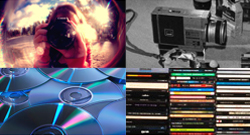Cataloguing

Audiovisual materials have characteristics that demand specialist cataloguing practices. Each archives’ cataloguing practices should support the choice of shared and recognized standards and use common rules for subject indexing. Differentiated “access points” for audiovisual materials should be considered. Catalogue systems contain content descriptions, physical carrier characteristics and its location in the archive. Catalogues can be manual systems like inventories and card catalogues or computerized systems: databases, information systems, (multimedia) catalogues. Storing information in a systematic, orderly fashion helps keep it manageable and retrievable. Catalogue information can be combined with data from other systems, so as to exchange data on audiovisual materials between different departments, organisations and over networks.
Unlike books, magazines and other print materials, AV-materials must be described in order to know what a film, tape or electronic file is about – it is not immediately perceptible. Because AV-content is temporal and sequential, materials are catalogued in such a way so that the user can quickly understand the chronology and storyline without having to view the whole programme. And as AV-content, contrary to print material, cannot generate its own ‘index’ (av-elements are not direct entries) the description is made so that index terms and descriptive information is searchable. The catalogue description thus functions as a substitute or representation of the audio-visual content and can be subjected to computer processing, generating an index to the programme, which can then be searched, manipulated and annotated.
The main questions to be answered by a catalogue description are: What is the programme about? What is to be seen and/or heard? Who’s responsible for the intellectual content, the production and the distribution of the programme? And: what kind of carrier is it? What kind of machine do I need in order to play it? And lastly, where can I find the tape, film, cassette, file on which the programme is recorded?

